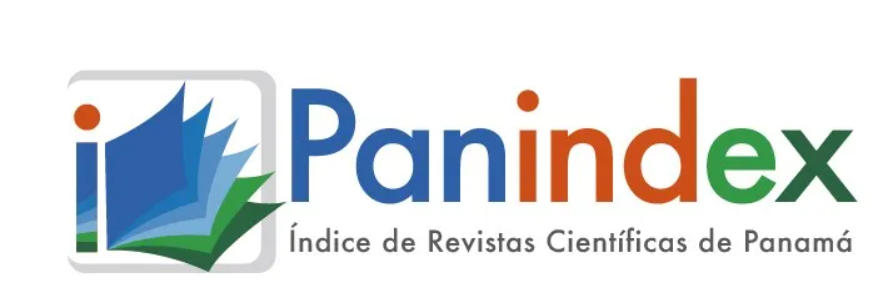The content of the publications and the links suggested in them are the sole responsibility of the authors and not of the METROPOLITAN UNIVERSITY OF EDUCATION, SCIENCE AND TECHNOLOGY (UMECIT) or DIALOGUS magazine. They are protected by international copyright laws as well as the UMECIT and DIALOGUS logos, hence their reproduction is totally prohibited.
This work is licensed under a Creative Commons Attribution-NonCommercial-NoDerivatives 4.0 International License.
The authors maintain the copyright and transfer the right of the first publication to the journal, with the article registered with Creative Commons Attribution-NonCommercial-NoDerivatives License, which allow others They can download the works published in this magazine and share them with other people, as long as their authorship is recognized, but they cannot be changed in any way nor can they be used commercially.
Authors are recommended to include their work in social networks such as Researchgate and institutional repositories once the article or visible fact has been published on the journal page, without forgetting to include the digital document identifier and the name of the journal.



Abstract
A society characterized by accelerated changes, challenges organizations to promote the development of competencies that allow them to adapt, evolve and respond effectively to the demands of the contexts. This article develops the premises that support an approach to the knowledge of the evolution of Human Resource Management, its importance in Organizational Management, the inherent processes and functions, as well as the techniques that are currently used for its management; based on the findings of the documentary review. It also establishes a relationship with the school environment and the challenges faced by the school to respond to the demands of efficiency and effectiveness. Teamwork, horizontal hierarchical structures, flexible and remote workforce, alignment of personal and organizational interests and the ability to adapt and overcome adverse environments, among others, are the current organizational trends for Human Talent Management, which suggests then, the challenge of knowing them, identifying the appropriate ones for each contextual environment, within the framework of a Strategic Management, in order to strengthen organizational cultures and climate, so that they become competitive and impact on the achievement of institutional goals and objectives.
Keywords
References
Coll, C. (2012). Las Tic, la nueva ecología del aprendizaje y la educación formal.
https://www.youtube.com/watch?v=3-FRdOBbvnk
Contreras, E. (2013). EL concepto de estrategia como fundamento de la planeación estratégica. Pensamiento & gestión(35), 152-181. https://www.redalyc.org/pdf/646/64629832007.pdf
Chiavenato, I. (2009). Gestión del talento humano (3 a ed.). Mc Graw Hill. https://cucjonline.com/biblioteca/files/original/338def00df60b66a032da556f56c28c6.pdf
Giraldo, A. M., & Arango, M. J. (2006). Formación del talento humano: factor estratégico para el desarrollo de la productividad y la competitividad sostenibles en las organizaciones. Revista Científica Guillermo de Ockham, 43-81.
Labia, B., Ocampo, A., & Quintero, G. (04 de 2015). Herramientas implementadas en la gestión de recursos humanos en las etapas de planeación y seguimiento de proyectos. Herramientas implementadas en la gestión de recursos humanos en las etapas de planeación y seguimiento de proyectos , 15-16. Cali, Colombia.
Leal, M. y García, M. (2008). Evolución histórica del factor humano e n las organizaciones: de recurso humano a capital intelectual. Omnia, 14(3), 144- 159. https://www.redalyc.org/pdf/737/73711121008.pdf
Ministerio de Educación Nacional. (s.f.). Revolucióneducativa programa para el desarrollo de competencias. (M. d. Nacional, Editor) https://www.mineducacion.gov.co/1759/articles-217596_archivo_pdf_desarrollocompetencias.pdf
Montoya, A. y Boyero, M. (2016). El recurso humano como elemento fundamental para la gestión de calidad y competitividad organizacional. Visión de Futuro, 20(2), 1- 20. https://www.redalyc.org/pdf/3579/357947335001.pdf
Morales, R. (2018). La planeación de la enseñanza- aprendizaje, competencia que fortalece el perfil docente. Ride, 8(16), 1- 24. http://www.scielo.org.mx/pdf/ride/v8n16/2007-7467-ride-8-16-00311.pdf
Pastrana Armínola, L., & Oviedo, P. (2014). Investigaciones y desafíos para la docencia del siglo XXI. Bogotá D.C: Kimpres Universidad De La Salle. http://biblioteca.clacso.edu.ar/Colombia/fce-unisalle/20170117032546/investigacion.pdf
UNESCO. (2013). Enfoques estratégicos sobre las TICS en la educación en América Latina y el Caribe. . http://www.unesco.org/new/fileadmin/MULTIMEDIA/FIELD/Santiago/images/ticsesp.pdf
Downloads
Publication Facts
Reviewer profiles N/A
Author statements
- Academic society
- Universidad Metropolitana de Educación, Ciencia y Tecnología
- Publisher
- Universidad Metropolitana de Educación, Ciencia y Tecnología




















